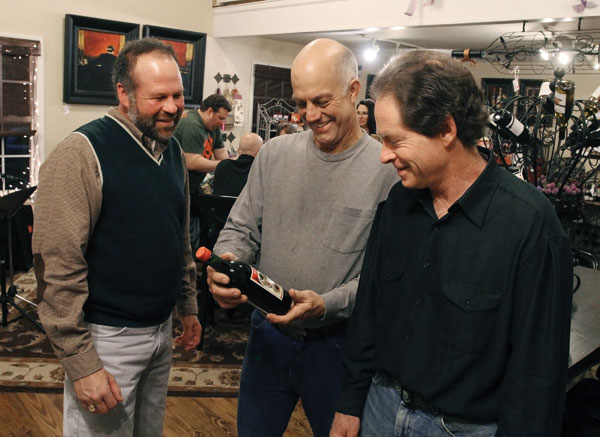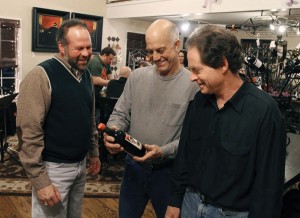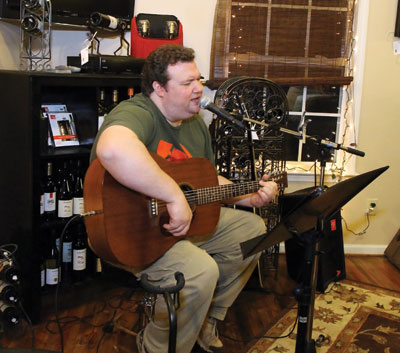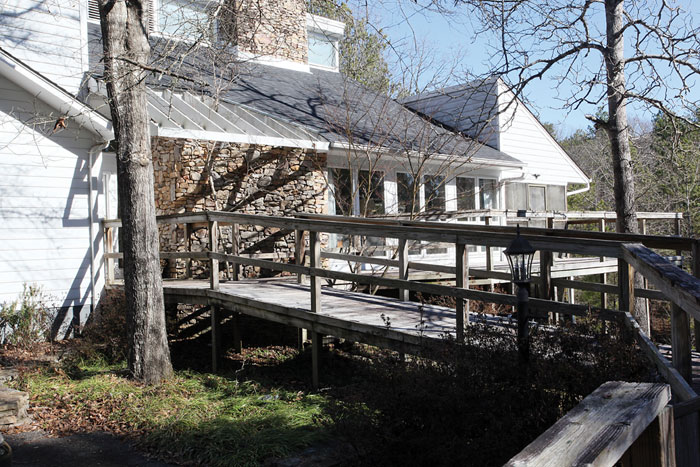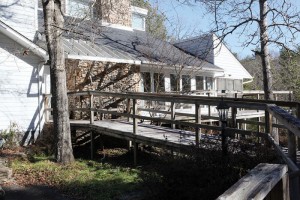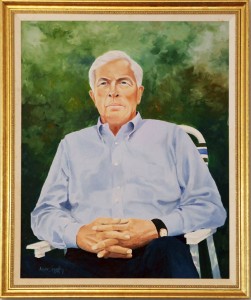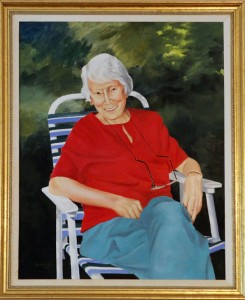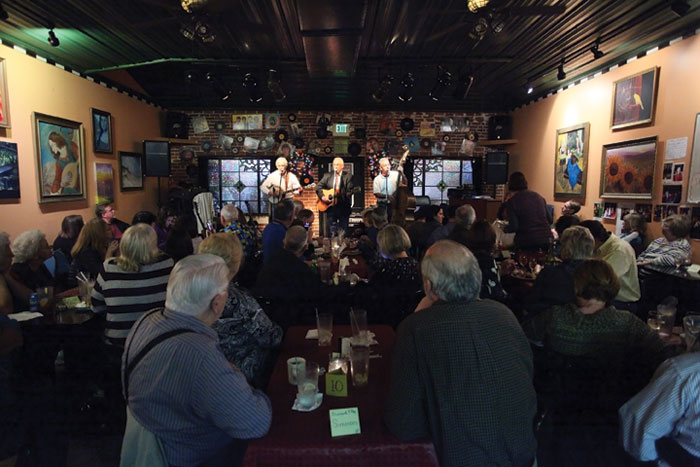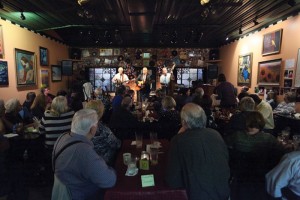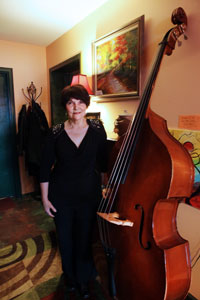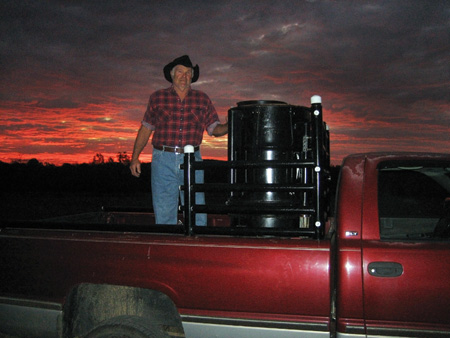Lusitanos, Arabians find home in St. Clair
Story by Elaine Hobson Miller
Photos by Jerry Martin
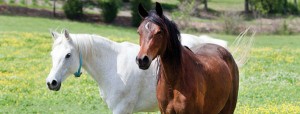 From the deserts of ancient Arabia and the bullfighting rings of Portugal, two distinctly different yet equally majestic horse breeds have made their way to St. Clair County. World-class Arabians prance and play at Don Olvey’s Aradon Farm in Odenville, while purebred Lusitanos strut and cavort at Robert and Carolyn Crum’s Shangrila Farm in Gallant.
From the deserts of ancient Arabia and the bullfighting rings of Portugal, two distinctly different yet equally majestic horse breeds have made their way to St. Clair County. World-class Arabians prance and play at Don Olvey’s Aradon Farm in Odenville, while purebred Lusitanos strut and cavort at Robert and Carolyn Crum’s Shangrila Farm in Gallant.
The owners of both farms started their breeding programs for the same reason: They fell in love with a breed. Olvey’s passion started with a day at a friend’s barn, while the Crums began by admiring an exhibition horse. In each case, a spark was ignited instantly, and their encounters changed the course of their lives.
“I had a friend in the Arabian horse business, and he had an Open Barn with food and tours and invited me to come out,” says Olvey, 76, who rode American Quarter Horses as a child. “I saw these beautiful Arabians, a breed I had never seen before. I decided then and there to get into raising them.”
Olvey bought his first Arabian in 1985 while living in Hoover. He built a barn on his stepfather’s farm in Tuscaloosa County, where he kept his horses until he could find a place of his own. He considers his discovery of the land that was to become Aradon Farm as something magical.
“I wasn’t familiar with this side of town,” he says of Odenville. “I went to Pell City one day, looked on a map and saw Highway 174. I thought I would ride through there on my way home. Through the trees I saw this beautiful pasture, and I said to myself, ‘Oh, would I love to have that.’ I drove another block, and saw a for-sale sign. I called the Realtor immediately and signed the contract that day. It was just what I wanted.”
That first horse Olvey purchased was a stallion, because “every man thinks he wants a stallion,” he says. Then he bought four mares out of Missouri and had them shipped to Alabama. He did a lot of research to learn the industry, studying national Arabian horse publications to get familiar with the bloodlines. “Even in the Arabian breed, there are several different bloodlines,” says Olvey. “You’ve got the Egyptian strain, the Polish, the Russian, the Spanish, and the American strain — called domestic because we’ve taken all those others and blended them together.”
 Although his original horses were either sold or died, they gave Olvey his start toward becoming one of the largest Arabian breeders in the Southeast. He has two domestic Arabian stallions, both of them champions. Giaccomo was a Scottsdale Arabian Horse Show Champion 2-year-old colt, a U.S. National Top Ten Yearling Colt and a Region 15 Champion Stallion. PS Andiamo is a U.S. and Canada Top Ten Stallion. Both were sired by Marwan Al Shaquab, who is “the hottest thing in the (Arabian) breeds right now,” according to Olvey.
Although his original horses were either sold or died, they gave Olvey his start toward becoming one of the largest Arabian breeders in the Southeast. He has two domestic Arabian stallions, both of them champions. Giaccomo was a Scottsdale Arabian Horse Show Champion 2-year-old colt, a U.S. National Top Ten Yearling Colt and a Region 15 Champion Stallion. PS Andiamo is a U.S. and Canada Top Ten Stallion. Both were sired by Marwan Al Shaquab, who is “the hottest thing in the (Arabian) breeds right now,” according to Olvey.
His two stallions and 12 broodmares produce six to 10 foals per year, which are weaned at four months and sell for $5,000 to $80,000 each. He also breeds to other people’s stallions, and ships semen from his own stallions to other breeders for a $2,500 stud fee. He has eight babies due next year. “We breed for halter horses, and that’s what we mainly show,” Olvey says.
Charlie Watts, one of the Rolling Stones rock group, bought one of Olvey’s mares and flew her to England. Olvey has spent time around Wayne Newton, one of the top Arabian breeders in the country, as well as the late actor Patrick Swayze. “At a horse show, everybody is just an Arabian horse person,” Olvey says. “Even Swayze you wouldn’t have thought was anybody special. He was there because he loved the horse and he wanted to compete and blend in.”
Until recently, his resident trainer, Les Sichini, handled the horses at shows. But three years ago Olvey started showing as an amateur with two of his Aradon-bred colts, Pysnario and Phantasy. He started winning right out of the chute.
“I’ve never had so much fun,” he admits. “I won in Scottsdale, won the Region 12 (a big Southeast show) and at National, I was in the top 10 out of 29 horses. I was thrilled with that.”
While he used to enjoy trail riding, he can’t ride anymore due to back surgery. His carpet business, Don’s Carpet One, keeps him pretty busy, and so does his fight with cancer. “In 2003 I was told I had two years to live,” he says. “Three and a half years later, I was told that again. I’ve been undergoing treatments for nine years, and I’m still in the battle. I’m really a strong believer, I’m a Christian, and I’m at peace with whatever God wants.”
Portuguese roots planted in Gallant
Robert and Carolyn Crum were living in West Palm Beach, Fla., when they saw their first Andalusian horse. “He was a gorgeous black exhibition horse, and we started talking to his trainer,” Carolyn relates. “We decided to start breeding Andalusians.”
In 2001, they went to Mexico to get married on the farm of a breeder of Andalusians and Lusitanos. Intending to buy an Andalusian, they came home with a Lusitano stallion and mare instead.
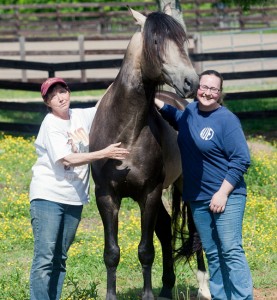 The Andalusian and the Lusitano are related, both having come originally from Spain, according to Carolyn. That country used them for bullfighting. When Spain outlawed bullfighting, there was nothing for the Spanish horse to do. So Spaniards started breeding them for beauty and elegance. The Portuguese still used these horses for bullfighting and trained them for the ring by having them work cattle in the fields.
The Andalusian and the Lusitano are related, both having come originally from Spain, according to Carolyn. That country used them for bullfighting. When Spain outlawed bullfighting, there was nothing for the Spanish horse to do. So Spaniards started breeding them for beauty and elegance. The Portuguese still used these horses for bullfighting and trained them for the ring by having them work cattle in the fields.
“The Portuguese horse stayed more true to its roots than the Andalusian did,” Carolyn says. “The Lusitano is from Portugal.”
Originally from Birmingham, Carolyn was an attorney in Atlanta for several years when she decided to make a change and moved to Florida. That’s where she met Robert, who was in the construction business. It was a second marriage for both of them, and they shared a common interest in horses.
For the next 10 years, the Crums bred, trained and showed their horses. They concentrated on quality, rather than quantity, and their two stallions and two broodmares produced one or two babies each year. But they usually had half a dozen foals, colts and fillies of various ages and levels of training. Then the economy went sour, construction work dried up, and their health took a turn for the worse. The Crums had to make a difficult decision. “We almost got out of the horse business,” Carolyn says. “But we enjoy being able to see them every day. So we downsized to a smaller operation and changed our focus to breeding only.”
They also decided to leave Florida. With Carolyn’s roots in Alabama, they looked in this state and in Tennessee for some farmland and found a place in Gallant that was already set up for breeding warmbloods. They moved there in January, bringing trainer Whitney Wenzel, an Auburn University graduate from South Carolina, with them.
“It was a difficult move for 11 horses and all that equipment,” says Carolyn. “Half of my furniture is still in my guest house in Florida.” The Crums live in an apartment that’s part of their 17-stall barn, with plans to build a house one day.
Their breeding stock now includes three stallions and two broodmares. The grand old man of Shangrila Farms is Exaustivo, a 27-year-old who was born and trained at the Alter Real Stud in Portugal. The Alter Real was founded by the king of Portugal in the 1500s to breed classical equitation horses. Veneno Imperial is their 10-year-old exotic, buckskin-colored stallion imported from Brazil. Bolero (nicknamed Muffin) is a 6-year-old Shangrila Farm baby, whose grandsire was an international champion jumper, Novilheiro, ridden by famed British horseman John Whittaker. Bolero and Veneno have been featured in several international equine calendars.
They also have a couple of pets, including a rescued thoroughbred and a miniature horse named Cooper who loves to escape his corral and do laps around the barn. In addition, Whitney has five horses of her own.
At seven months, the Shangrila foals are weaned and ready to be matched up with a buyer, if they haven’t already been sold in-utero (before birth). The latter sell for $6,000, while the foals go for $8,000 and the weanlings for $10,000. The average would be $18,000 for a 2- to 3-year old, $22,000 – $25,000 for a 4-year-old under saddle with basic training. It isn’t unusual, however, for a Lusitano with great bloodlines and basic dressage training to go for $45,000, while one at the Grand Prix level of dressage could command $125,000.
“Lusitanos are used primarily for dressage. That’s where the market is,” Carolyn says. “They make wonderful cow horses, but no one wants one for that. They are too expensive for that discipline.”
After two heart surgeries, Carolyn, 75, can no longer ride. Neither does Robert, 72. The horses keep them young in mind and heart, though. They produce a calming effect on Carolyn, whether she’s rubbing their necks or watching them frolic in the pasture. The babies are her biggest joy, and she’s looking forward to a new crop next year.
“We haven’t had any babies for the last two years because of the economy, ” she says. “The number of our semen shipments are down, too. Horses are a reflection of the economy. But I‘m optimistic about this year.”



































